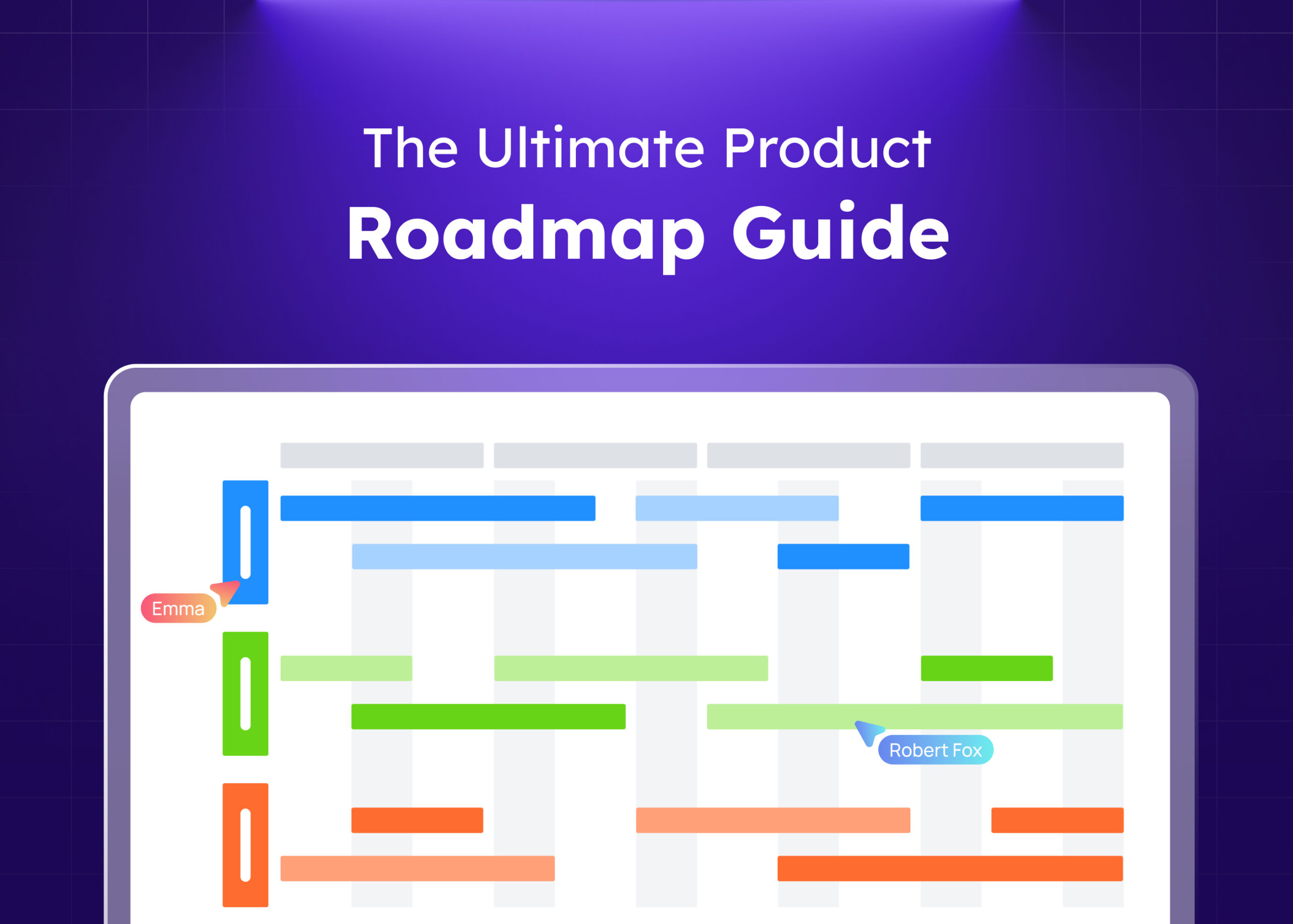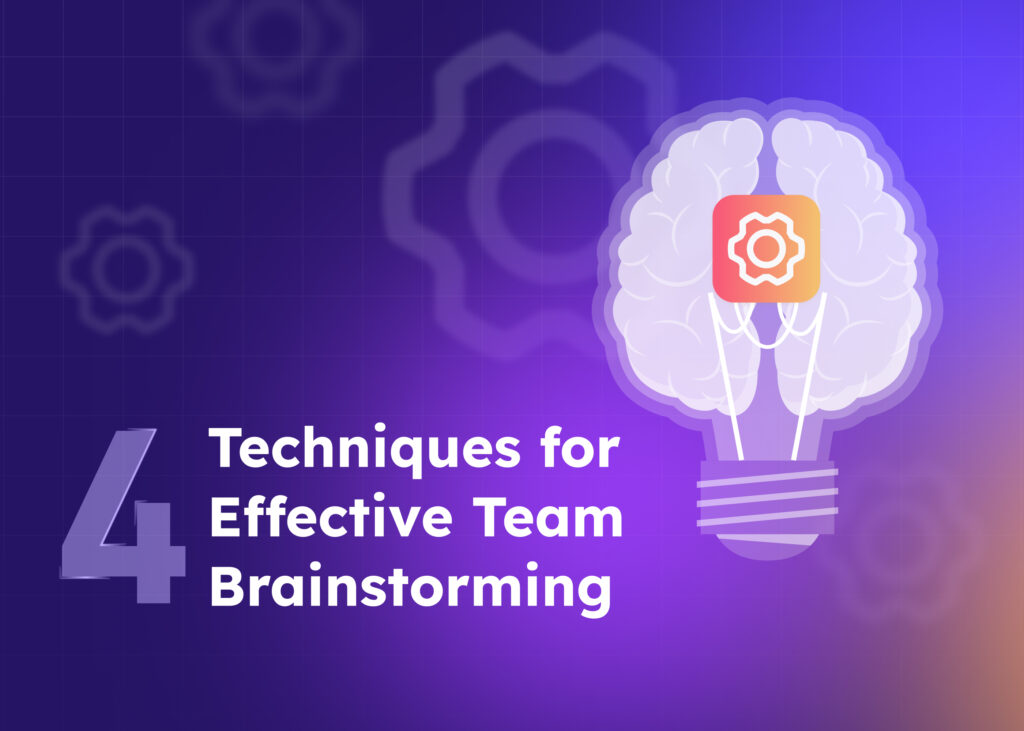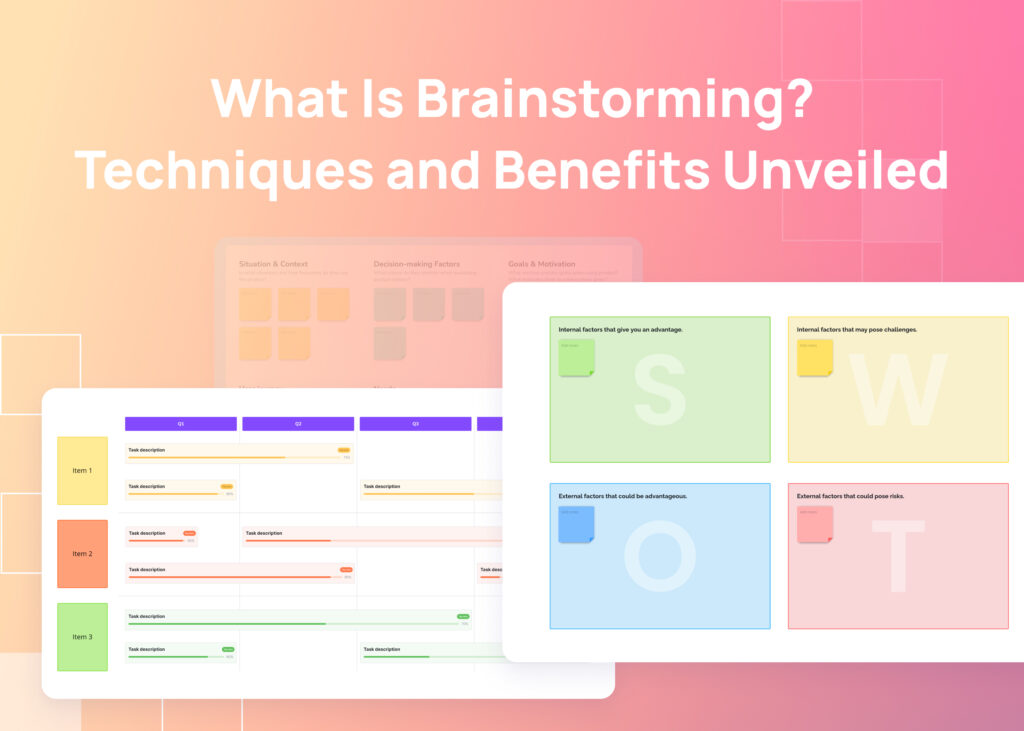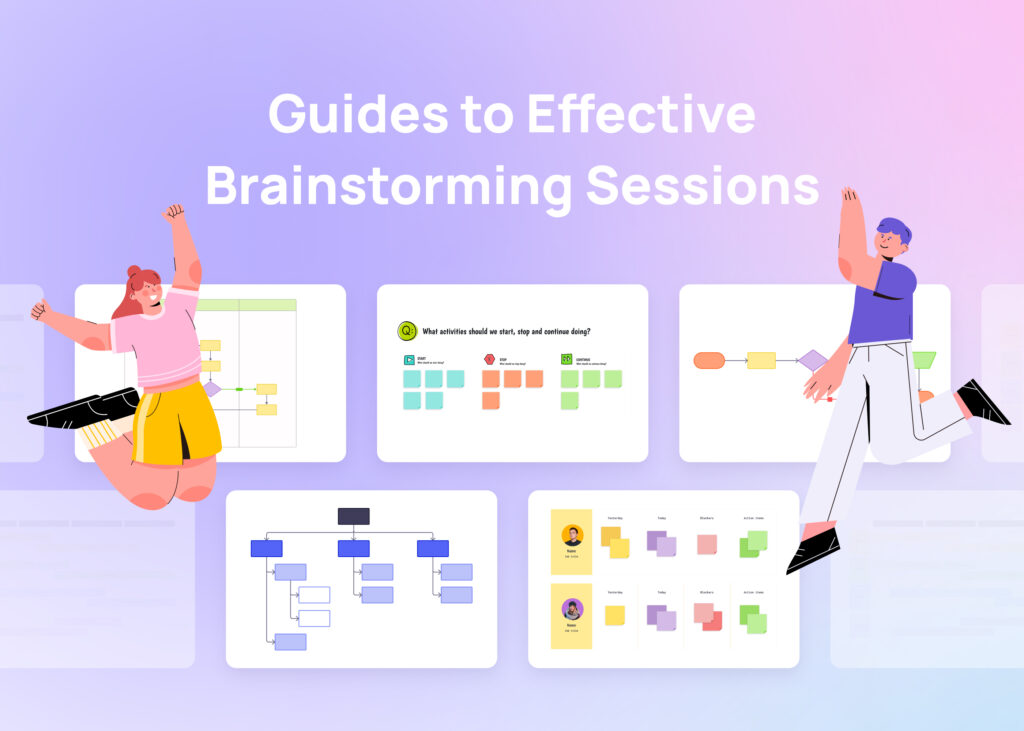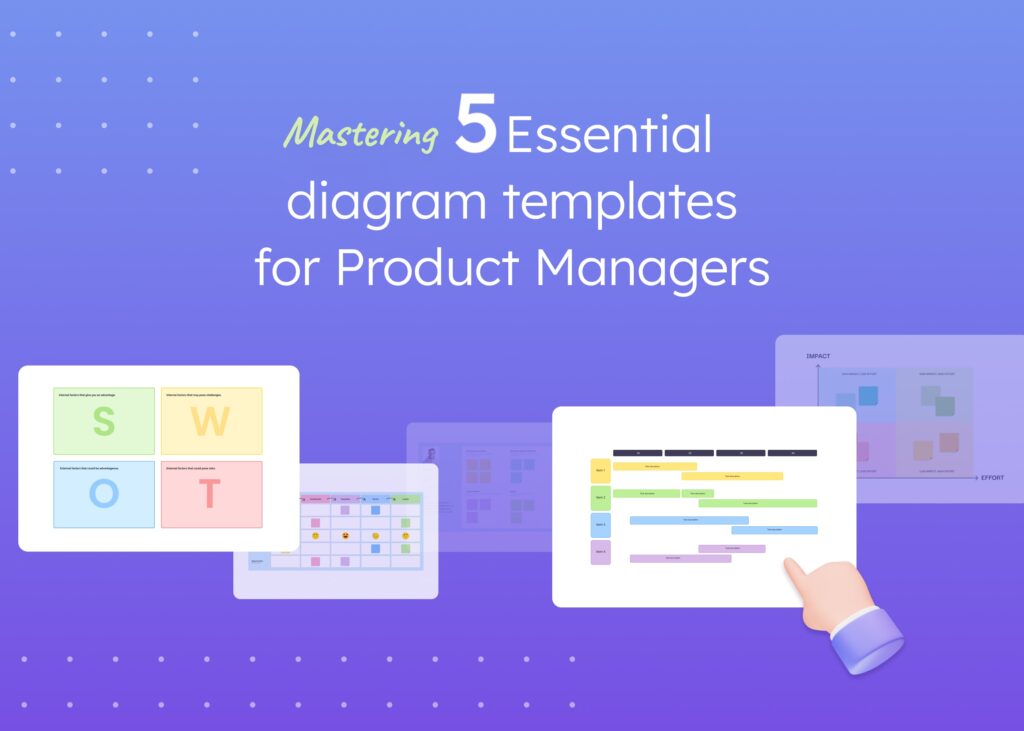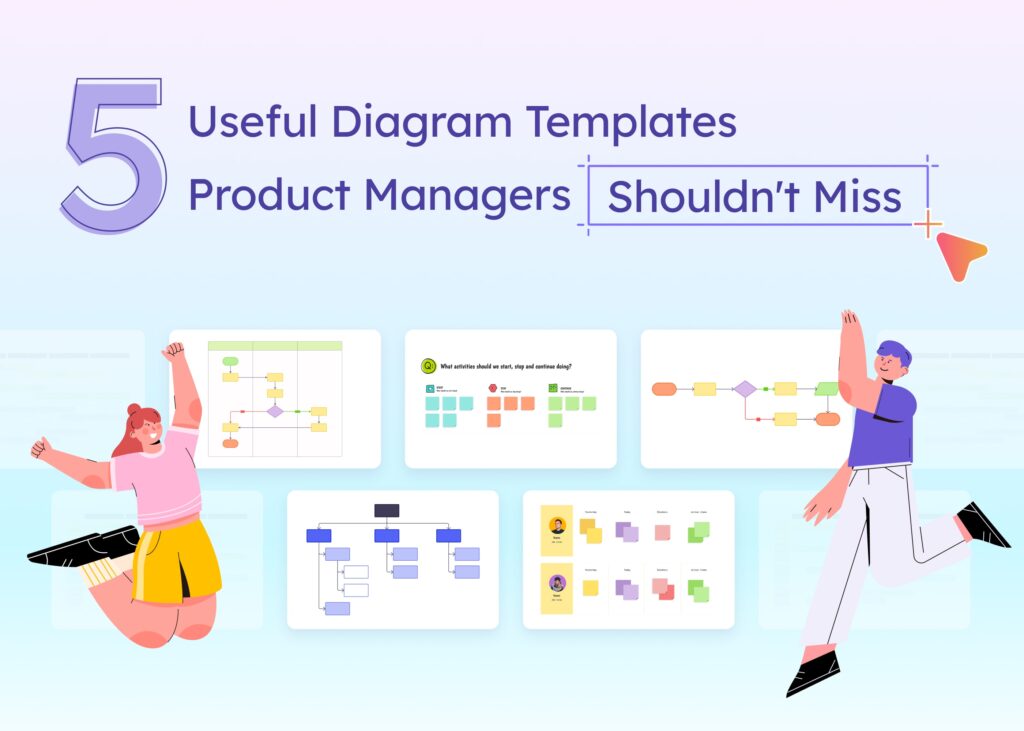In the field of product management, effective planning, and visualization are key to success, and the product roadmap serves as a prime tool for this.
A product roadmap is a strategic plan that details the vision, trajectory, and advancements of a product in the long run. It showcases the objectives and methodology of a product team.
Crafting a well-defined product roadmap is a must-have skill for any product manager. In this guide, we will lay out a clear definition of a product roadmap, and we’ll also walk through the process of building a product roadmap and offer some general guidelines to help you choose the right format.
What is a product roadmap?
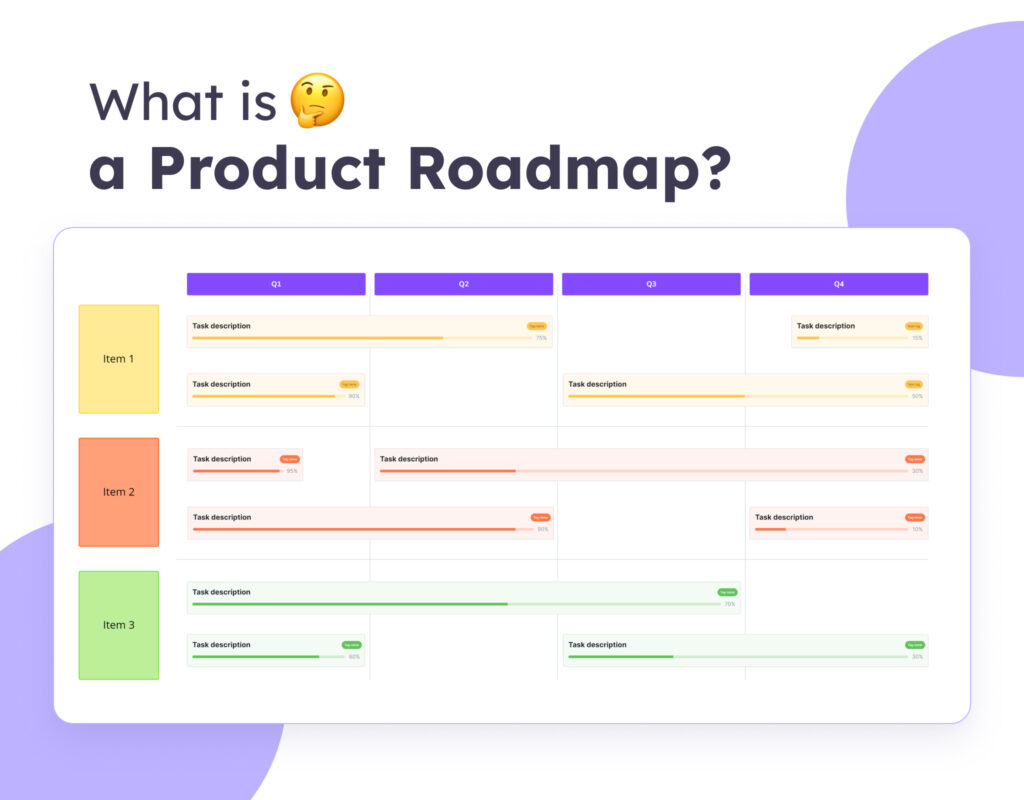
A product roadmap is a visual overview that outlines the long-term vision and trajectory. It’s a strategic plan for the features, solutions, and ideas you aim to deliver to customers.
At its core, a roadmap communicates the why and what behind product decisions, and it typically extends 12–24 months into the future.
Roadmaps don’t feature granular details but capture epics, themes, and direction. It shows the problems you’re trying to solve, strategic objectives, and when you intend to release key features or updates.
It’s used as a guiding document that helps coordinate teams and set expectations. In addition, the plan is not intended to be fixed. Instead, it is an evolving vision that can adapt to change.
Who is responsible for creating the product roadmap?
The product manager or product team usually makes the product roadmap. While the PM takes the lead, effective roadmapping requires collaboration across different roles and stakeholders.
The PM gathers input from various teams like engineering, design, and sales. They provide valuable insights into technical feasibility, UX points of view, and customer needs. The PM consolidates this feedback into a cohesive roadmap guiding the product vision and strategy. The final roadmap reflects a shared understanding of the product’s direction across teams.
Types of product roadmaps
Product roadmaps come in many shapes, sizes, and structures. However, the goal for each roadmap can be pretty different.
Let’s dig into three popular types:
Go-to-market roadmaps
Go-to-market roadmaps outline the stages and activities required to launch a new product or feature and bring it to market. This type of roadmap focuses on market research, product positioning, pricing, distribution channels, sales enablement, and launch marketing.
Go-to-market roadmaps help ensure alignment across departments on what needs to happen to introduce a product and achieve business goals successfully.
Release roadmaps
Release roadmaps, also known as delivery roadmaps, lay out the sequencing and timing of specific product releases and software versions. They detail planned iterations, features, and updates that’ll be shipped.
Release roadmaps make it possible for development teams to strategize product delivery and help communicate release plans across the organization.
Theme-based roadmaps
Theme-based roadmaps organize planned work and product direction around specific themes, goals, or strategic initiatives. For example, a theme-based roadmap may have broad themes like “improving user onboarding” or “increasing monetization.”
Theme roadmaps are useful for tying product plans back to larger business objectives and initiatives. They provide flexibility to pivot as needed while maintaining focus on the desired outcomes.
Why is a product roadmap important?
Product roadmaps serve as a blueprint for turning product strategy into tangible results. They effectively filter through numerous priorities and prioritize the most crucial ones, disregarding distractions to focus on tasks that truly impact stakeholders.

In addition, they serve as a source of creativity, drive, and shared interest in the product and its accomplishments. All the work individual contributors do only makes sense when viewed in the context of the product roadmap. Knowing that plan and what the organization hopes it’ll bring can get naysayers on board.
Product roadmaps are typically shared with the entire organization, unlike sales pitches, marketing plans, and financial information, which are typically kept confidential. These roadmaps give employees a glimpse into the future direction of the product and the company, as well as the reasoning behind significant decisions. They serve as a unifying tool for all employees, providing a mutual understanding of the vision, goals, and objectives of the company.
Product roadmaps serve as a valuable tool for organizations to prevent chaos, prevent less significant tasks from taking priority, and avoid wasting resources on individual agendas. They act as a guiding light, central point, and markers for all team members involved in bringing the product to market.
What are the key ingredients of a good product roadmap?
Each roadmap is intricately designed, like a snowflake, and is highly complex. Its structure varies based on the product being developed, the industry it belongs to, the team size and dynamics, and the specific requirements of the company creating the product.
Despite any variations, most product roadmaps share these fundamental elements:
Product features
Product features are its capabilities and solutions to issues. The development team usually reviews user feedback and determines which features to incorporate next.
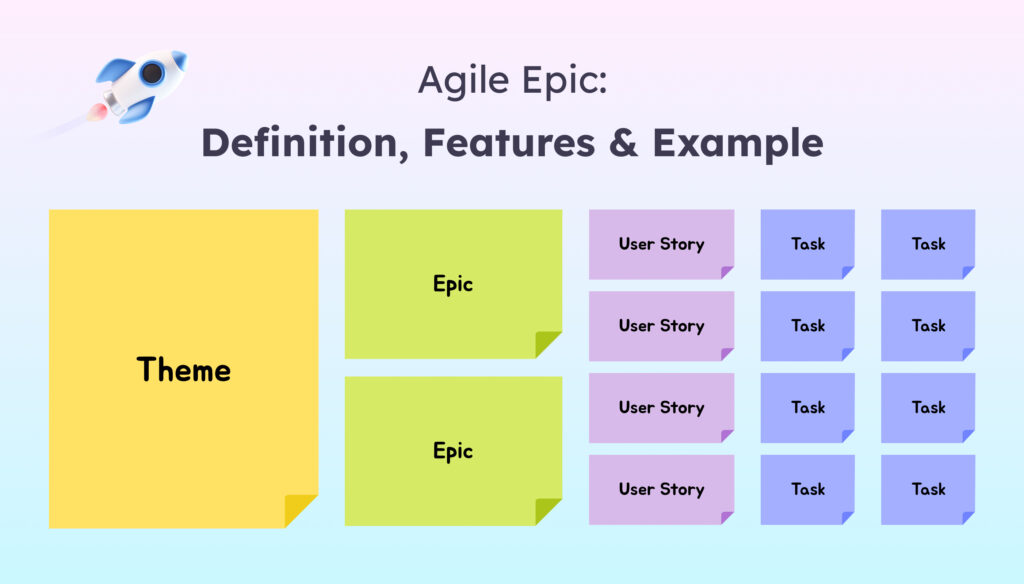
User stories
In an agile approach, user stories are the fundamental building blocks of a roadmap. They’re composed of the end-user’s viewpoint and outline the ultimate objective of a product’s functionality. The terms “story” and “feature” may be used interchangeably in this context.
Epics are formed by grouping interconnected stories.
Epics
In an agile roadmap, epics consist of groups of stories. They can cover multiple teams (or even multiple software version releases) and there may be numerous epics included in a specific roadmap.
Product releases
In planned product releases, new features are rolled out to users. Sometimes, a completed feature may be held back until other features are finished to optimize customer experience (CX) by including multiple features in a single release.
Product initiatives
Initiatives demonstrate how stories, features, tasks, and projects come together to achieve product goals. They keep teams focused on goal-oriented efforts.
Product goals
Product features are tied to goals, which detail each feature’s implementation timeline and method. These goals should have a specific timeframe and be quantifiable, and a roadmap could comprise several goals leading to the completion of a single feature.
Product timelines
A typical product roadmap timeline will include dates for each milestone and a breakdown of the teams and people in charge of each task.
What are the stages of a product roadmap?
Since most products are always developing, the original roadmap that was used in the beginning might be replaced or updated. Because of this, roadmaps are often iterative and flexible; however, setting them up and executing them follow a few key steps.
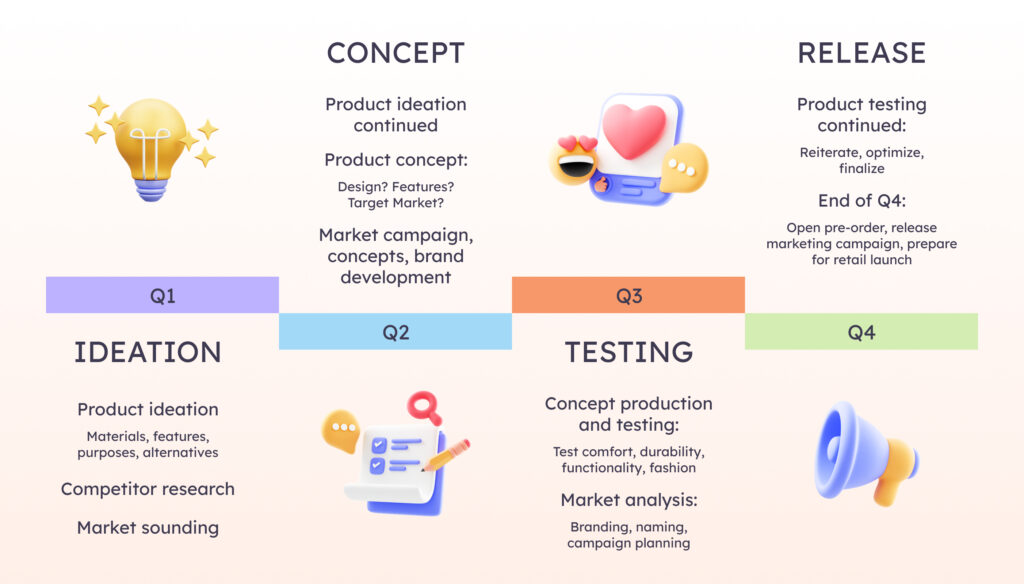
Ideation
In the ideation phase, product managers gather ideas for new features, improvements, or other initiatives.
These ideas can come from customer feedback, internal stakeholders, market analysis, or strategic goals. The objective is to generate a comprehensive pool of potential items for the product roadmap.
Prioritization
With a list of ideas in hand, it’s time to prioritize. Product managers analyze each potential roadmap item against criteria like customer value, development effort, dependencies, and alignment with company strategy.
High-priority items are slated for upcoming releases, while lower-priority items may be deferred.
Execution
Now the rubber meets the road. The prioritized roadmap drives what the development team builds and releases.
Agile methods are commonly used to develop roadmap items iteratively and incrementally. Product managers work closely with engineers to refine requirements, guide development, and gather feedback.
Launch
This stage represents releasing completed roadmap items live to customers.
Product managers oversee launch plans and marketing campaigns to promote the new capabilities. They also monitor usage metrics and customer feedback to see if the roadmap initiatives achieve the desired business impact. They may reprioritize the remaining roadmap items based on what’s been learned.
How to create a product roadmap
In order to create a roadmap, product leaders must assess proposals using important measures, such as market trends, customer understanding and input, corporate objectives, and resource limitations. Once these elements are understood, product teams can collaborate to determine which items should be prioritized in the plan.
The information presented in a roadmap is tailored to its intended audience. For instance, a roadmap designed for the development team may focus on a single product, whereas one created for executives may encompass multiple products.
In some cases, a single roadmap may encompass multiple teams within an organization that are working on the same product. External roadmaps typically cover multiple products that are aligned with a specific goal or customer demand.
The key lesson to remember is to design a easily comprehensible roadmap for your audience. Including either excessive or insufficient information can cause it to be overlooked or even appear too daunting to read. A well-balanced roadmap with a suitable level of detail and visual elements can help you gain the support of important stakeholders.
How to build a product roadmap with Visily?
Visily is an all-in-one product and app design solution. It helps product teams to create designs, wireframes, prototypes, and diagrams using AI. Using AI, users can create designs using screenshots and sketches or diagrams from text prompts. The other features include a massive template library, magic images (helps you find images), magic themes (enable you to edit themes), and autofill columns.
To build a roadmap with Visily:
- First, sign up for Visily and create an account to get started.
- Once logged in, click on “Create Project” to start a new roadmap.
- You have the option to start with a blank canvas if you prefer to build from scratch.
- Alternatively, Visily offers a wide array of diagram templates, including product roadmap examples. (Let’s go with this one for this example!)
- Choose a product roadmap template that best fits your needs from the library.
- Edit the roadmap to your specific project requirements, ensuring it reflects the same roadmap vision for your product.
- When your roadmap is ready, you can easily share the project with your team directly through Visily.
A key advantage of using Visily for product roadmaps is its seamless integration of UI screens for designing wireframes. This means you can enhance your roadmap with visual wireflows without needing to switch between different applications. Wireflows are visual representations that combine wireframes and flowcharts to show the user’s journey through a product. With Visily, you can easily insert these UI screens into your roadmap.
Best practices for building roadmaps
The success of a product roadmap depends on its execution. It involves not only its development but also ensuring agreement, decision-making, and advancement. Here, we’ll explore ways to optimize your roadmap.
Communicate its value
A roadmap is not just a visually appealing document. It serves as a strategic guide that communicates the vision, direction, and priorities of a product. It is essential to convey its significance to all stakeholders, including developers and executives.
Thus, it is necessary to ensure that its purpose is clear: to manage expectations, provide clarity, and inform decisions. Refer to it regularly during meetings, presentations, and discussions to emphasize its value.
Encourage your users to examine your publicly available roadmap and invite them to share their ideas.
Stick to it
While it can be tempting to pursue every new idea or piece of feedback, it’s important to stay focused on the plans you initially outlined in your roadmap. You prioritized those ideas for a reason, and following your roadmap will provide a sense of direction and stability. After all, that’s the whole point of having a roadmap!
Despite this, it’s important to find a middle ground between being consistent and being adaptable. Your product strategy may need to be modified based on changes in the market, user input, or advancements in technology. Being overly inflexible can result in missed chances or not meeting current demands.
Our sage wisdom: rely on your superior discernment. Avoid becoming overly preoccupied, but remain prepared to shift gears.
Measure performance and share the latest updates
Roadmaps cannot be fixed documents like Excel and PowerPoint roadmaps. The process of roadmapping does not conclude with a presentation. It is important to monitor KPIs and advancements and also keep clients updated.
Adjust as needed
The roadmap needs to remain flexible. Adjustments may need to be made as new information is gathered, feedback is received, or unforeseen challenges arise.
Make sure to regularly assess your roadmap to ensure it stays current and in line with the product objective and market conditions. As the product grows, your roadmap will also adapt, consistently guiding towards achieving the highest value and impact.
A product roadmap serves as both a roadmap and a means of communication. Use it, emphasize its importance, and maintain a balance between consistency and adaptability. And always be ready to make any necessary changes. This is how it can continue to be a dynamic tool that propels your product towards triumph.
Build the best product roadmap
In summary, building the best product roadmap starts with understanding your customers and their needs. Get out there, talk to users, conduct research, and really understand the problems you are trying to solve. Then, prioritize ruthlessly. Focus on delivering value, not just features. And iterate continuously to refine and improve.
A great roadmap is flexible and adaptable as you learn. Finally, align the whole company and get buy-in across all teams. A shared roadmap brings focus, transparency, and collaboration. Follow these steps and you’ll be the cool kid on the block with a product roadmap that delivers outstanding results.
Now go out there and build something great!
If you are looking for a tool to help you build roadmaps then try Visily for free.




